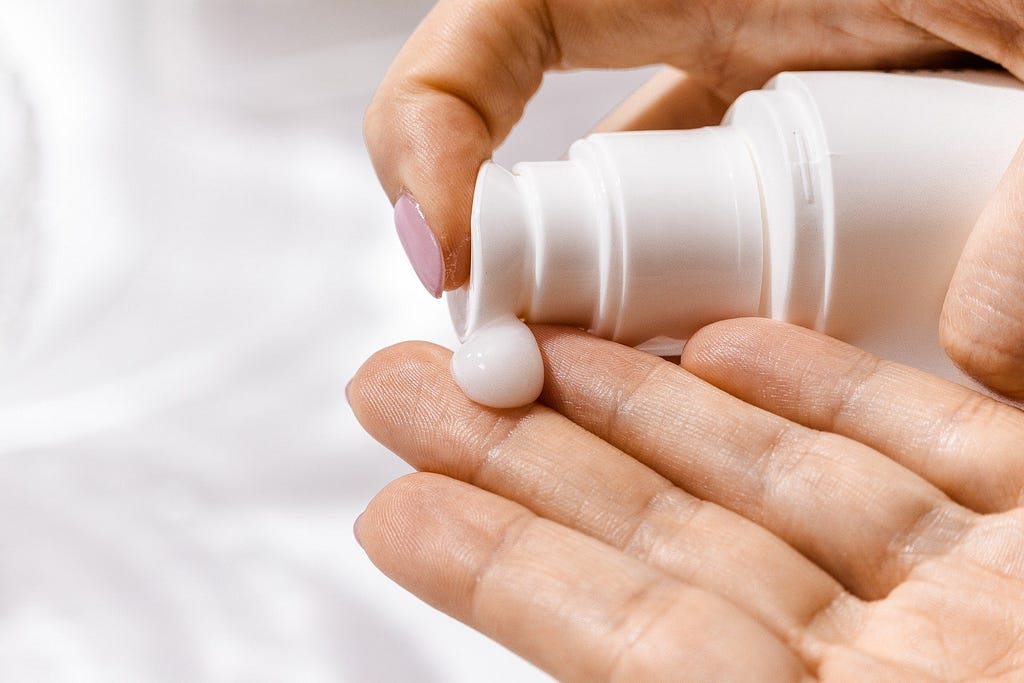
You may have seen many product packages proudly claiming to be silicone-free but what are silicones and should you be avoiding them? Today we break down all things silicone: where it comes from, what it does, and why it is in your products.
Silicon is not silicone?
Yes, there is a difference! Silicon is a natural chemical element and is the second most abundant element in the Earth’s crust (after oxygen). Due to its high affinity for oxygen, silicon often exists as silicon dioxide or silica powder found in sand and dust formations. It is prevalent in the personal care industry and construction, pottery, and masonry.
Silicon is so abundant that it is said to be an essential element to humans. In some microorganisms and sea sponges, silica is used as a structural source. In humans, it is a necessity for the making of elastin and collagen in the body. It is, however, considered a hazardous material when inhaled, and is generally considered a slight irritant in its pure form.
Silicone is a polymer (ie. a long chain of molecules) made out of siloxane (a combination of oxygen and silicon). The words siloxane and silicone are often interchangeable as they mean the same thing. Silicones belong to a chemical group called organosilicon compounds obtained through man-made synthesis. Because of their inert and non-toxic properties, and their flexibility, they are found in many industries such as pharmaceuticals, cosmetics, and more.

One thing that is also touched upon in our systems is the many variations of silicone copolymers. Copolymers are two or more different types of molecules that link together to form a chain. When coming across an ingredient that has the word copolymer in it, assume that you’re looking at a mix of the different molecules in that product. The safety of these ingredients may vary depending on which molecules were used to create the chain.
Variations of Silicone
In cosmetics, we often come across many kinds of silicones. In general, people say the rule of thumb is that anything ending with ‘cone’ is a silicone. But did you know there are many more silicones that do not end in ‘cone’? Here are a few examples of silicones rated in the Think Dirty App, and the research behind its ratings.
Cyclomethicone (TD rating: 4) is a silicone cyclic polymer. It is a colorless and odorless liquid found in deodorants, sunscreens, hair, and other skin products. The two most common forms of Cyclomethicone are D4 and D5, which do not pose a risk for human health. However, there are ongoing studies on these two to see whether they pose a risk to the environment.
Dimethicone (TD rating: 2) or also known as Polydimethylsiloxane (PDMS) is the most widely used silicon-based organic polymer in personal care products. It is a clear, inert, non-toxic, and non-flammable liquid that is a type of silicone oil. It is generally used for lubrication, but may also act as a surfactant and moisturizer. While safe, it may cause eye and skin irritation in certain individuals. It is also found to have low water solubility and is a low threat to the environment.

Dimethiconol (TD rating: 4) is like Dimethicone, but with a hydrogen and oxygen (ie. hydroxyl) group attached at the end. It is used for sensorial aspects, and for anti-caking, anti-static, anti-foaming, and film-forming. There is limited research on its toxicity and carcinogenicity, but the Cosmetic Ingredient Review (CIR) Expert Panel has listed it as safe for use. As it cannot be absorbed through the skin, it is less of a concern unless inhaled or ingested.
Dimethicone/Silsesquioxane Copolymer (TD rating: 0) is a mixture of Dimethicone and Silsesquioxane. It is generally added for film-forming and as a hair fixative agent. The research shows that it is safe for use in cosmetics.
Divinyldimethicone/Dimethicone Copolymer (TD rating: 3) is a silicone polymer that is used for anti-caking, skin protecting, and viscosity control in cosmetics. It can also act as a humectant, which helps keep water from evaporating on the skin. Like the previous copolymer, it is safe for use in cosmetics. It is however considered a slight eye irritant at higher concentrations.
Polymethylsilsesquioxane (TD rating: 0) is often added to create a smooth, lubricated, and silky feel to a product. It is also added for opacifying a product. There is not much research regarding its safety in humans but is generally considered safe for use in cosmetics.
One thing that is also common is the combination of Dimethicone and PEGs/PPGs as copolymers. These are used often as skin-conditioning agents. Generally, these are regarded as safe for use as well. For more detailed information on PEGs/PPGs, check out this blog post.
The verdict?
Silicones are not inherently bad. They have a lot of added benefits, such as detangling and smoothing hair, and hydration for the skin. They also improve the feel of many products. However, as with all ingredients, we should pay attention to how our body reacts and stay up to date on the latest research with the Think Dirty App.
Disclosure: We are a professional review and product rating website and mobile app that receives compensation from the companies whose products we review and rate. We are independently owned and the opinions expressed here are our interpretation of a trusted source.
Ingredient Breakdown: All Things Silicones was originally published in Think Dirty on Medium, where people are continuing the conversation by highlighting and responding to this story.